Testing Laboratory
Sand Testing Facilities

Sand Testing
Foundry sand testing is a process used to determine if the foundry sand has the correct properties for a certain casting process. The sand is used to make moulds and cores via a pattern. In a sand casting foundry there are broadly two reasons for rejection of the casting — metal and sand — each of which has a large number of internal variables. The defects arising from the sand can be prevented by using sand testing equipment to measure the various properties of the sand.
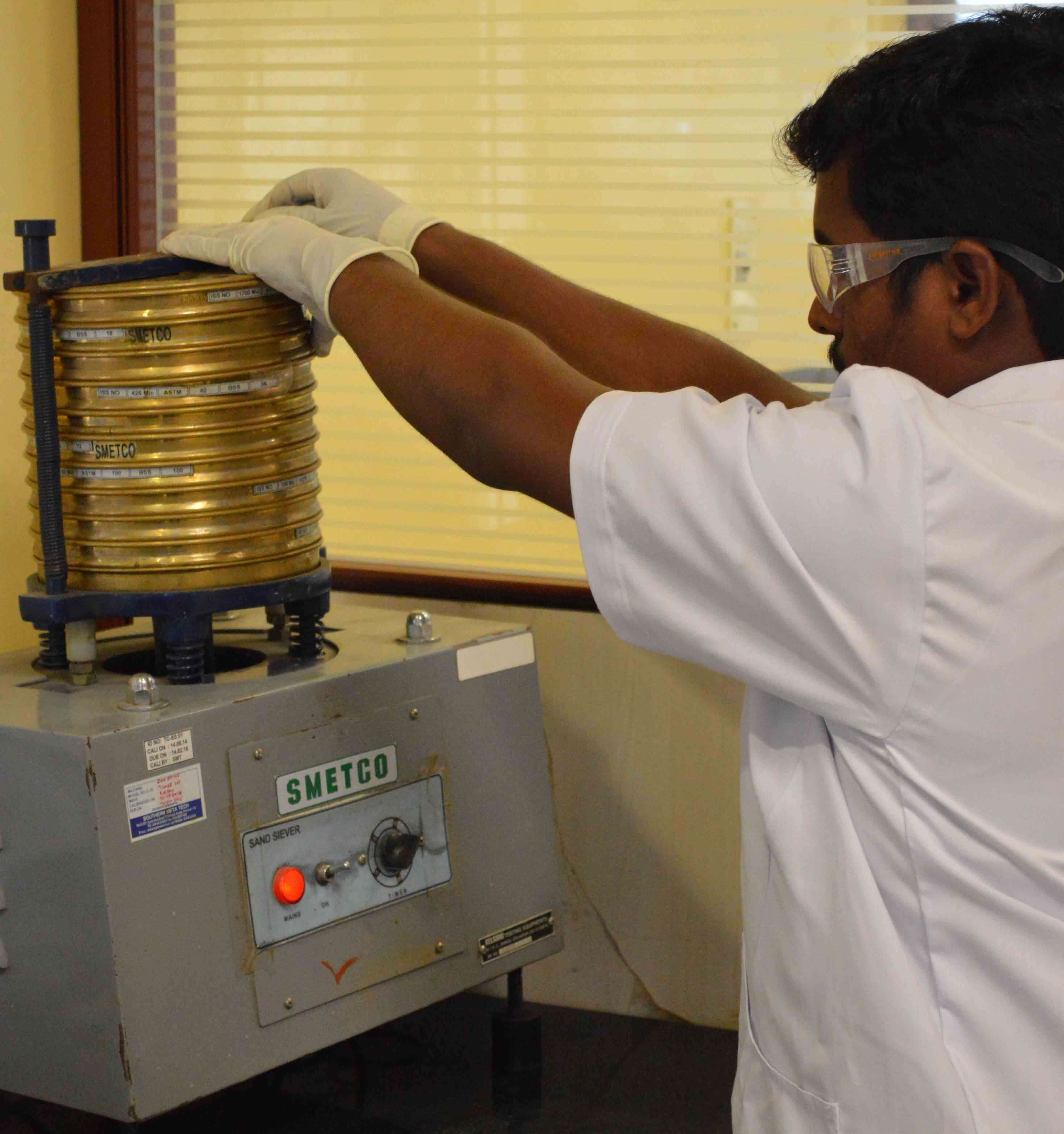
Sand Testing | American Foundry Society(AFS)
To obtain the AFS number, sieve analysis test is used. AFS number is the main parameter to determine the properties of sand. Various grades of sieves are used in the testing as per the applicable standards. AFS is measured for the incoming sand and the sand is inspected as per the applicable inspection plan before acceptance.
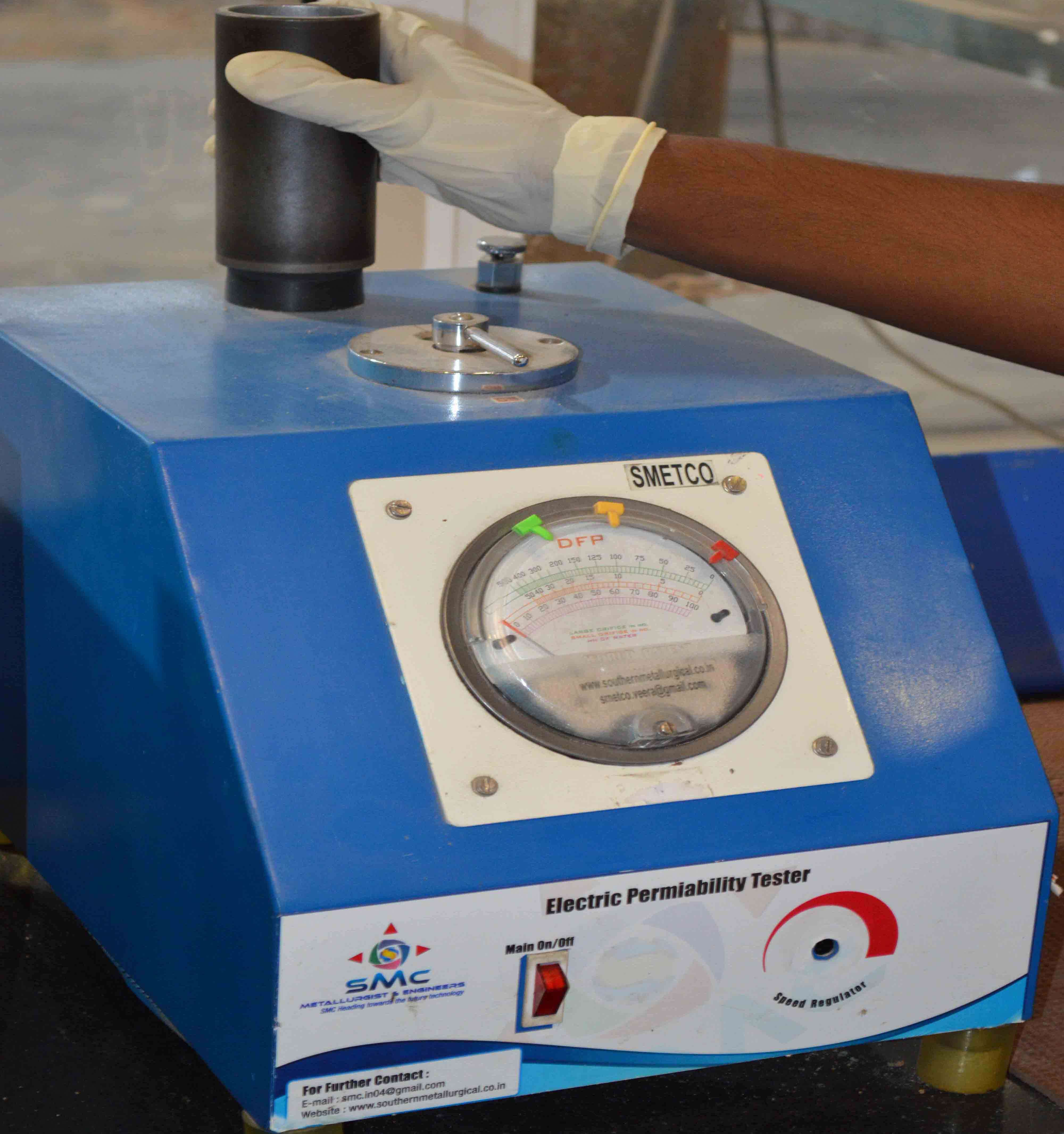
Permeability - foundry sand
Permeability is a property of foundry sand with respect to how well the sand can vent, i.e. how well gases pass through the sand. And in other words, permeability is the property by which we can know the ability of material to transmit fluid/gases. The permeability is commonly tested to see if it is correct for the casting conditions.
The grain size, shape and distribution of the foundry sand, the type and quantity of bonding materials, the density to which the sand is rammed, and the percentage of moisture used for tempering the sand are important factors in regulating the degree of permeability.

COMPRESSION STRENGTH OF SAND IN SAND TESTING - Compressive strength test, mechanical test measuring the maximum amount of compressive load a material can bear before fracturing.
The machine consists of an oil reservoir, movable ram, plug-in coupling low & high-pressure gauges to read 0 to 1.600gms/cm and 0 to 13 kg/cm compression strength respectively, loading piston connecting to threaded shaft and wheel, funnel with a special connection, a bottle of oil. A pair of compression pads are supplied with the machine.

Clay Content Testing
Activated clay is a naturally occurring porous mineral which has been dried to produce an adsorbent material. The clay has a good adsorption capacity within normal temperature and relative humidity ranges. ... The clay is usually more economical than chemically synthesized adsorbents like silica gel or molecular sieves.
Spectrometer
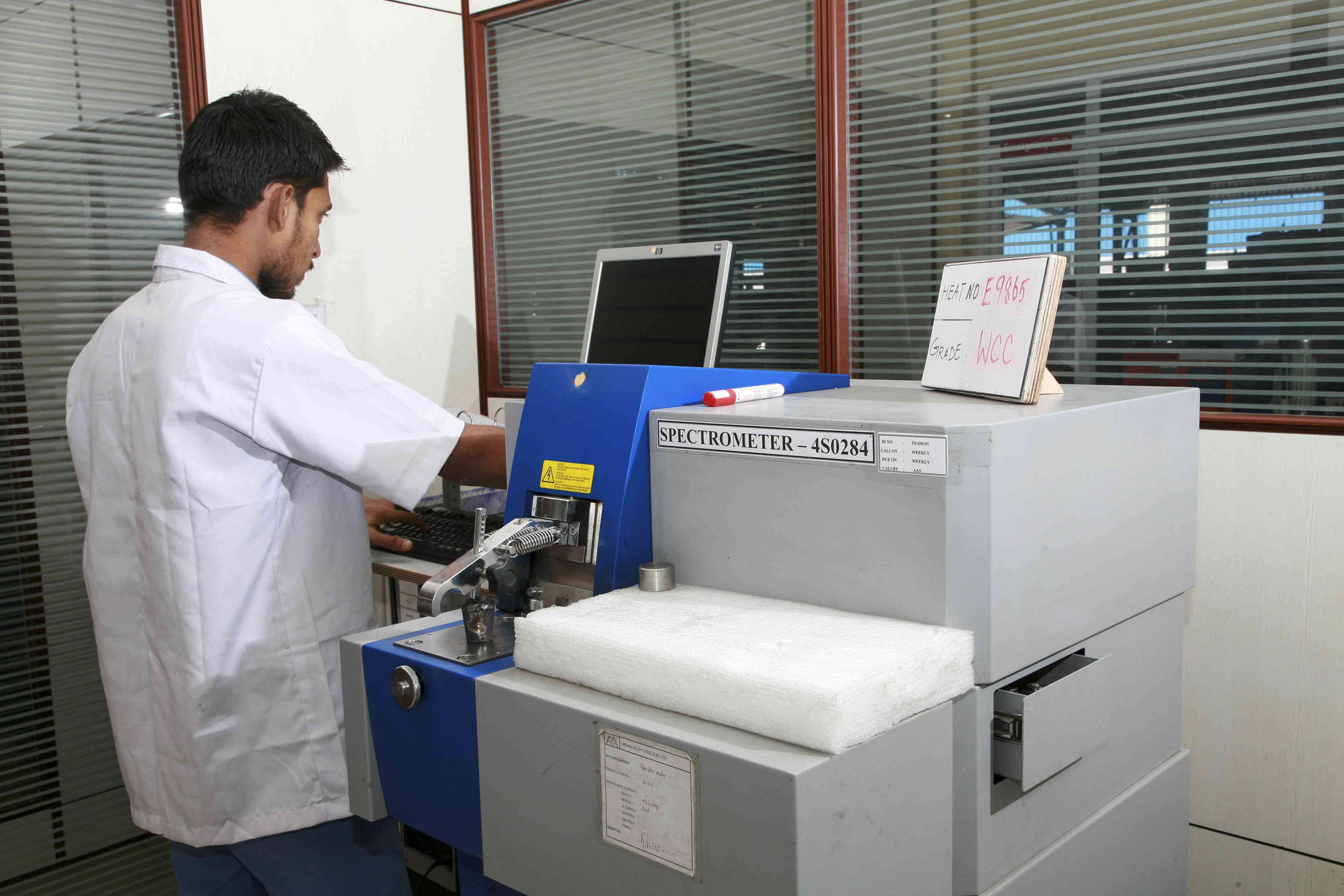
Spectrometer
Fe and Ni base spectrometer having 32 elements with facility of Nitrogen analysis CRM samples of
- Carbon Steel
- Low Alloy Steel
- Martensitic Steel
- Austenitic Stainless Steel
- Duplex Stainless Steel
- Nickel Base Alloy
- Copper Alloy
Tensile Testing
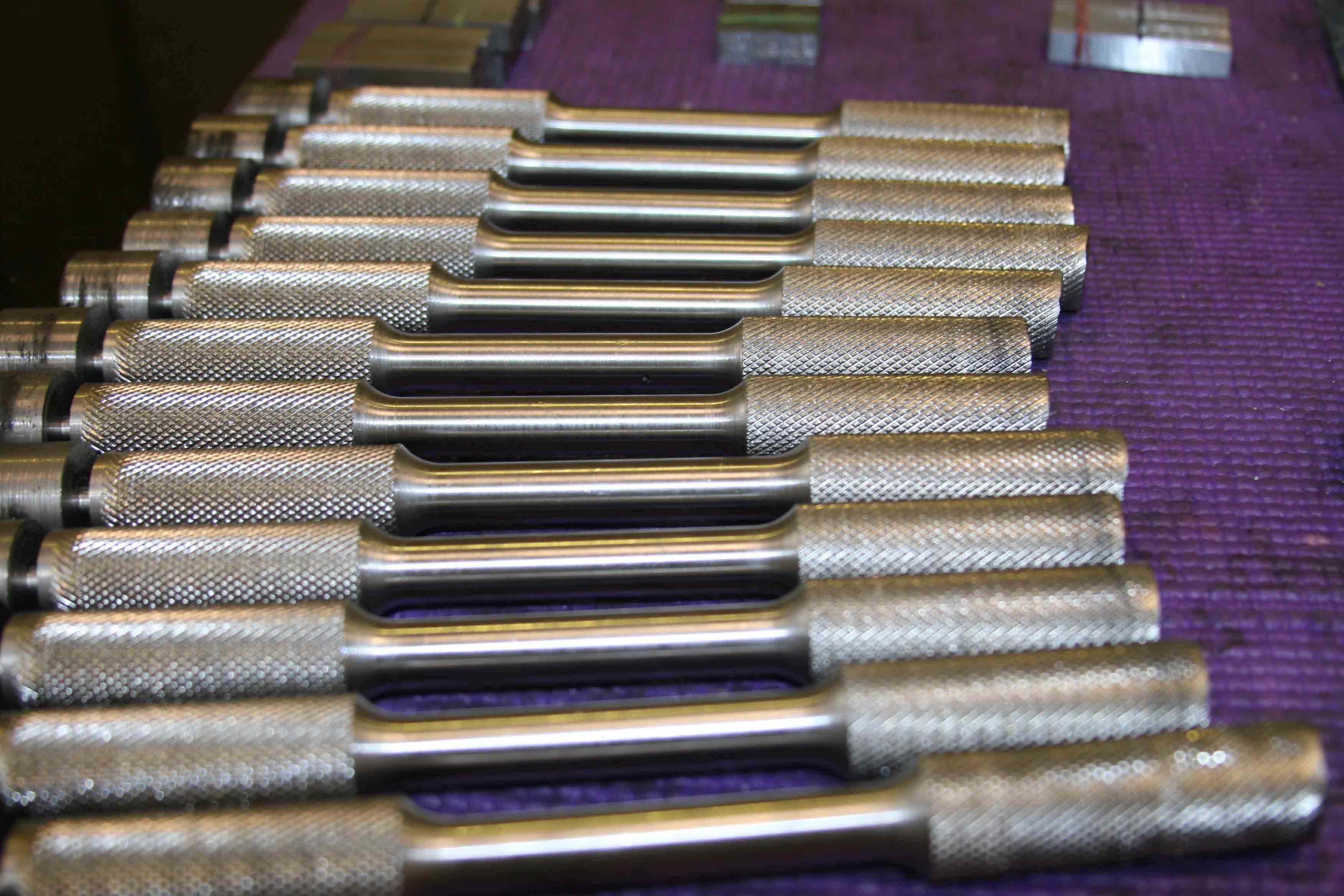
Tensile Testing
UTM capacity of 400 KN & 600 KN Electronic Extensometer for 0.2% proof stress Elevated Temperature Testing with Extensometer
Impact Testing

Impact Testing
The ASTM E23 method describes the Charpy (simple beam) testing and the Izod (cantilever-beam) testing of notched-bar impact testing of metallic materials which determines the energy absorbed by the material during fracture.

Spelimer Testing
Test specimens are machined with in-house machining facility.

Testing
Testing may be performed at a variety of temperatures. The absorbed energy in a measure of the material’s toughness and may be used to study the changes in energy absorbed at fracture at various temperatures.

M / C
Broaching machine is used to make the notch on the specimen. Automatic software (Fine IT Solutions) is used to measure the dimensions of the impact specimens.
Hardness Testing
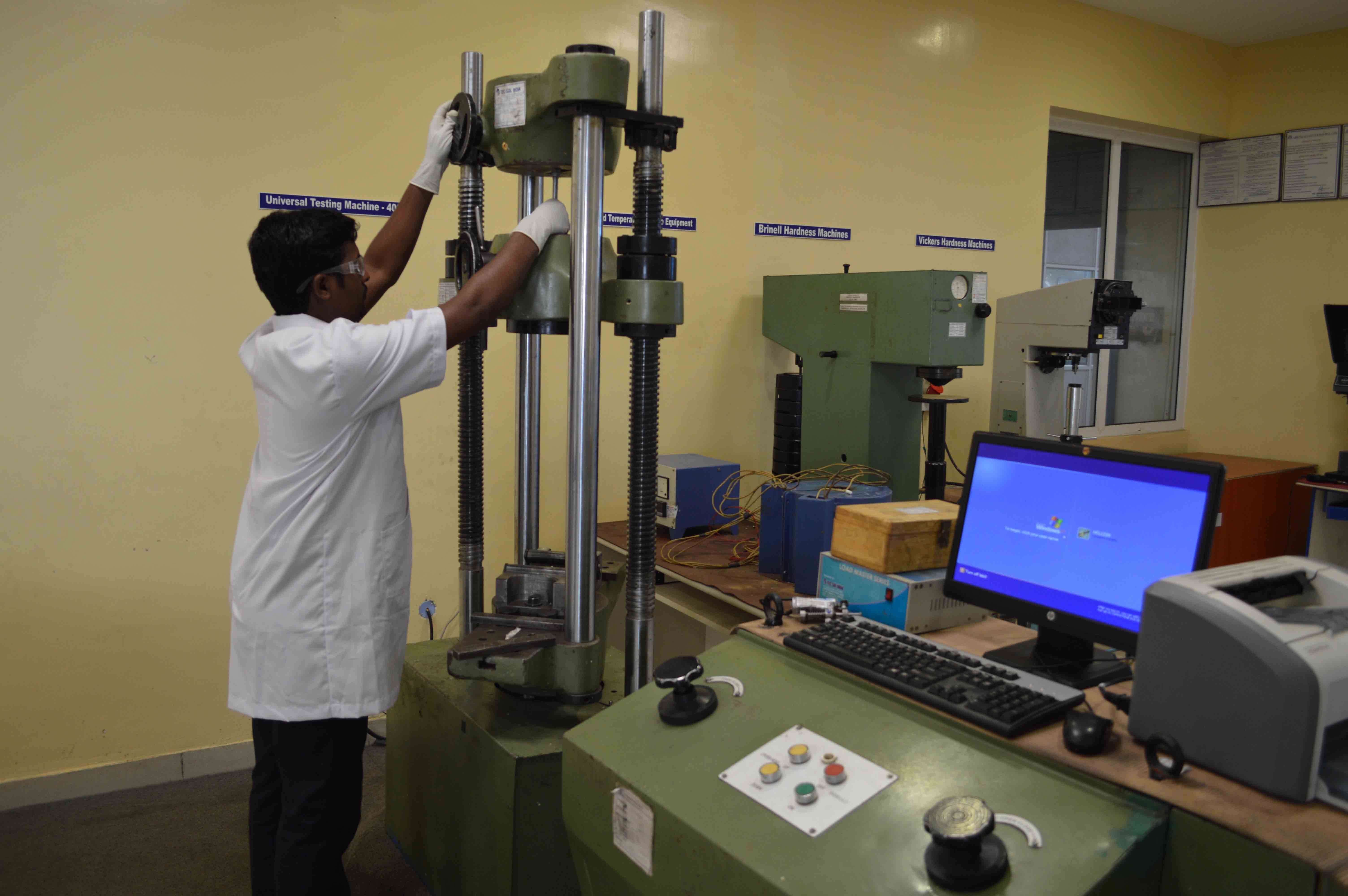
Hardness Testing
A hardness test is typically performed by pressing a specifically dimensioned and loaded object (indenter) into the surface of the material you are testing. The hardness is determined by measuring the depth of indenter penetration or by measuring the size of the impression left by an indenter
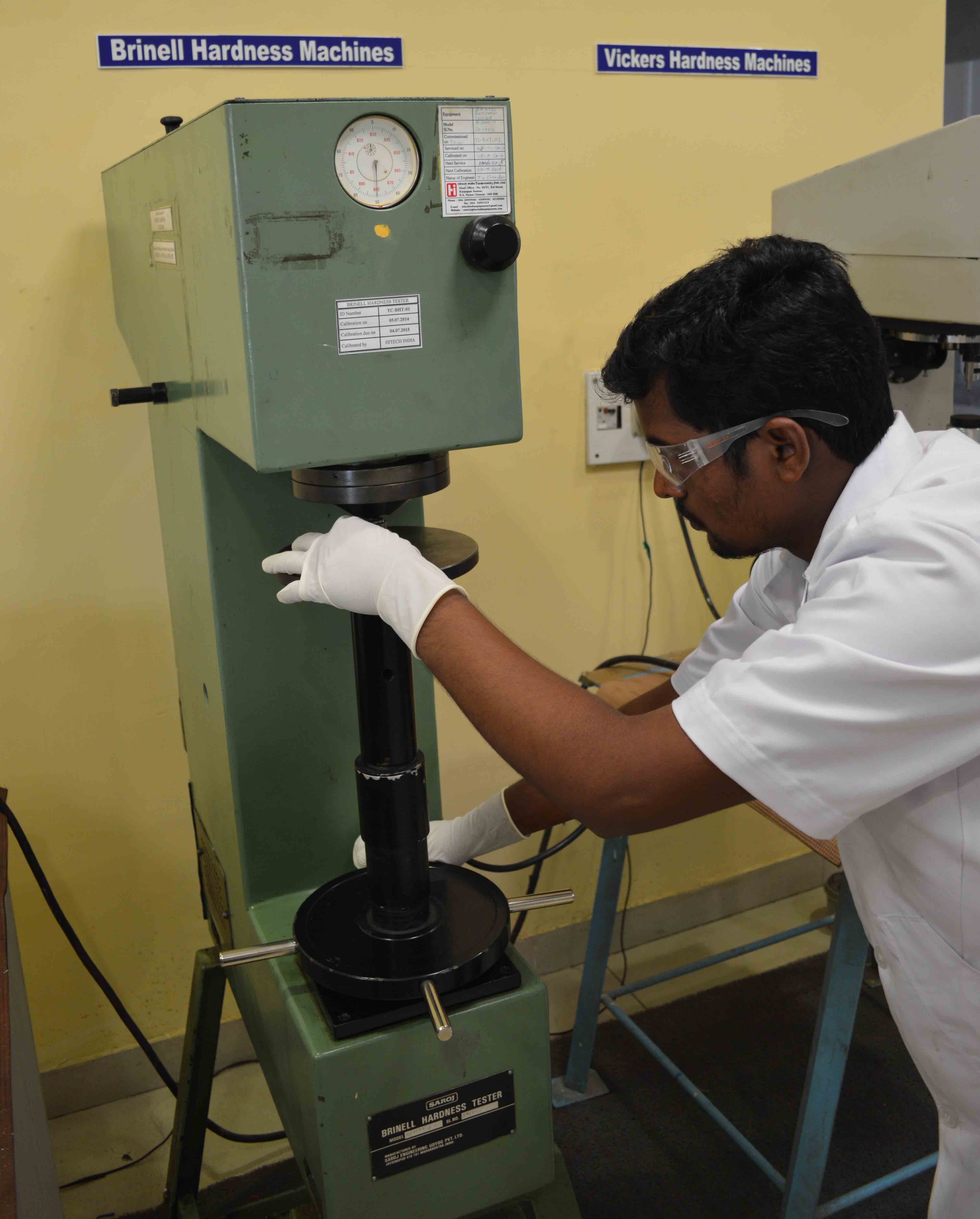
Brinell Hardness Testing
The Brinell hardness test method as used to determine Brinell hardness, is defined in ASTM E10. Most commonly it is used to test materials that have a structure that is too coarse or that have a surface that is too rough to be tested using another test method, e.g., castings and forgings.
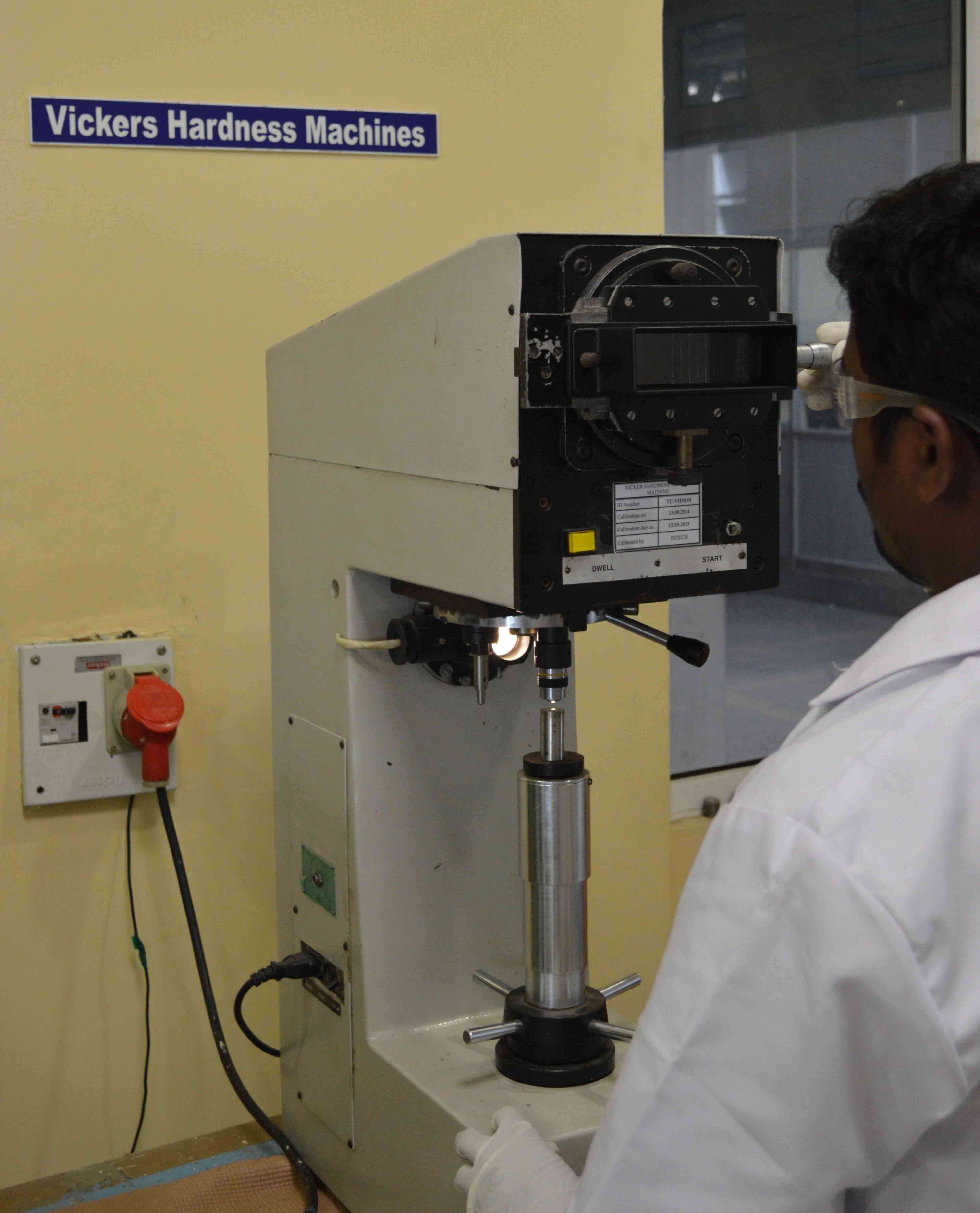
Vickers Hardness Testing
The Vickers hardness test method, also referred to as a microhardness test method, is mostly used for small parts, thin sections, or case depth work. The Vickers method is based on an optical measurement system. The Microhardness test procedure, ASTM E-384, specifies a range of light loads using a diamond indenter to make an indentation which is measured and converted to a hardness value.

King Brinell Hardness Testing
The King Brinell is designed to make impressions that are used to measure the hardness of metal. The King Brinell Hardness Tester is a precision instrument which serves a dual purpose. It can be used as a bench-type tester or taken to the job site in almost any location. The King portable Brinell meets all international standards for Brinell testing including ASTM E 110.
Ferrite Testing
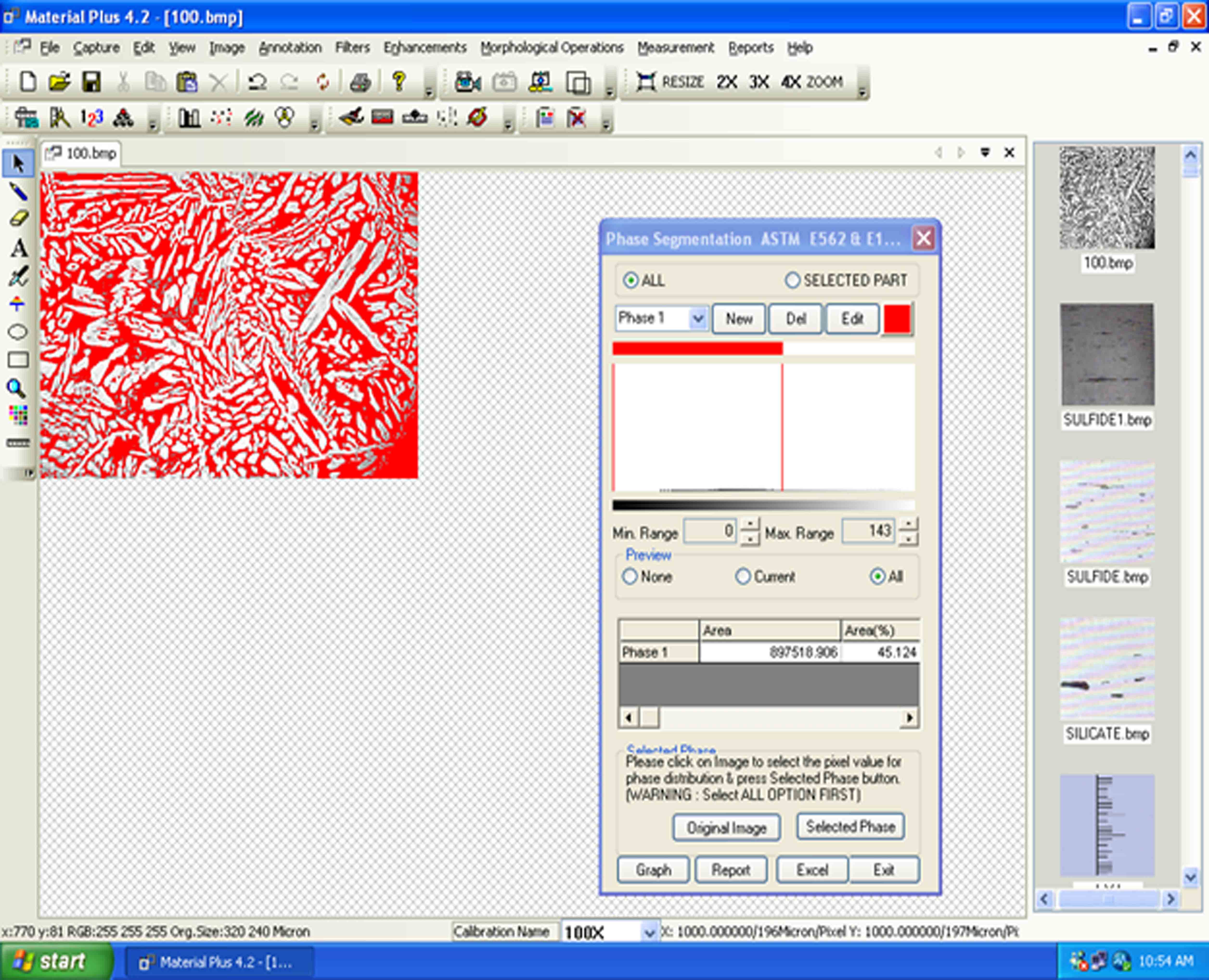
Ferrite Testing as per ASTM E562
To determine the ferrite content in duplex and super duplex stainless steel as per ASTM E562 by manual point count method. Image analyzer is available for automatic volume fraction method with the help of material plus analysis software.

Microstructure Examination as per ASTM A923
Various steel micrographs can be analyzed with two inverted metallurgical microscopes after the applicable heat treatment process completion.

Grain Size as per ASTM E112
Grain size can be measured as per ASTM E112 with applicable etching of the specimen after fine polishing.
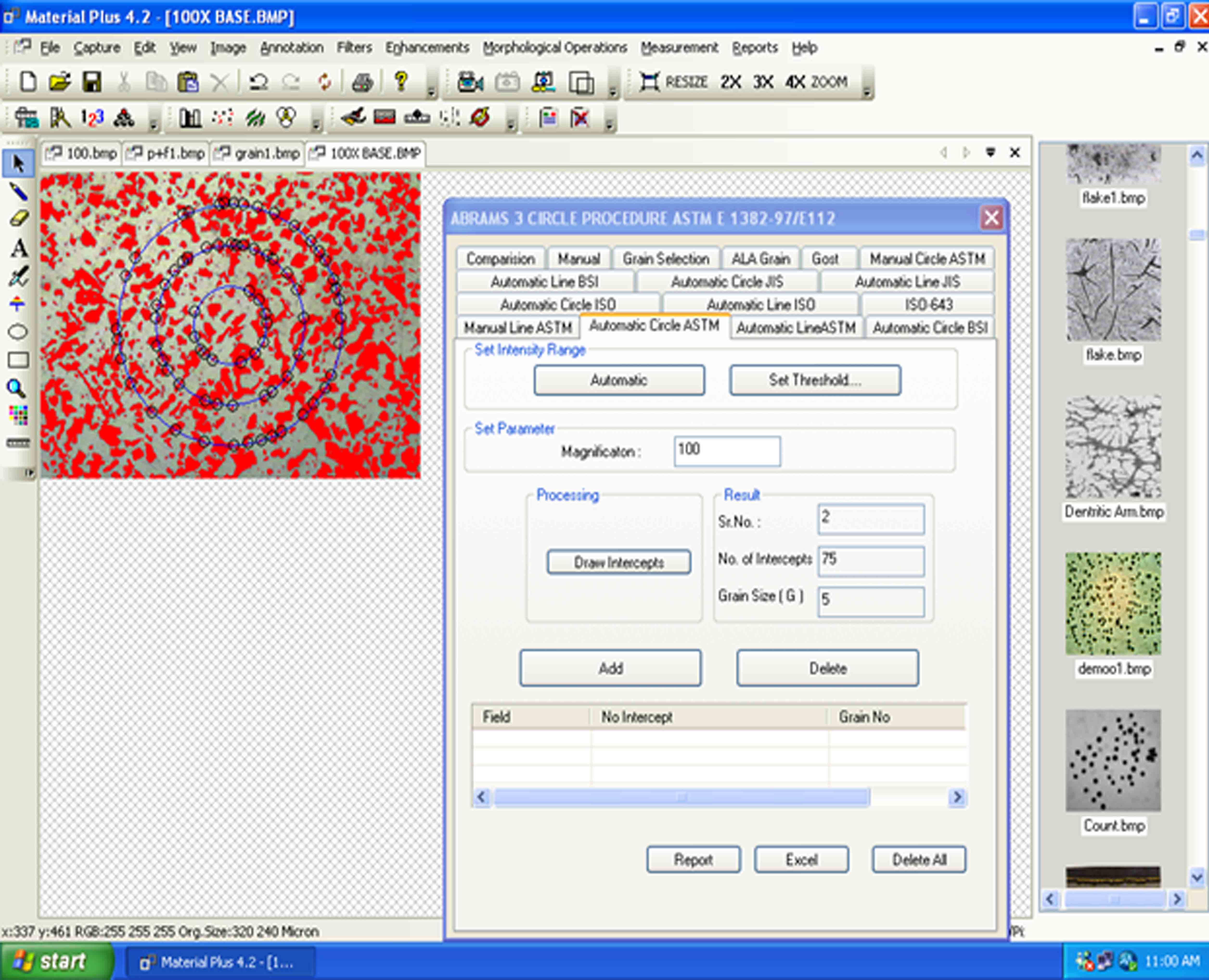
Inclusions as per ASTM E45
Inclusions can be measured as per ASTM E45 before etching the specimen surface with microscope. It can be classified to various types of inclusions as per standard.

Ferritescope
Portable ferrite tester is used to check the ferrite content on the casting by magnetic response method as per ASTM A800.

In- Situ metallography
Microstructure can be analyzed on the casting with portable metallurgical microscope at various magnification levels.
Corrosion Testing
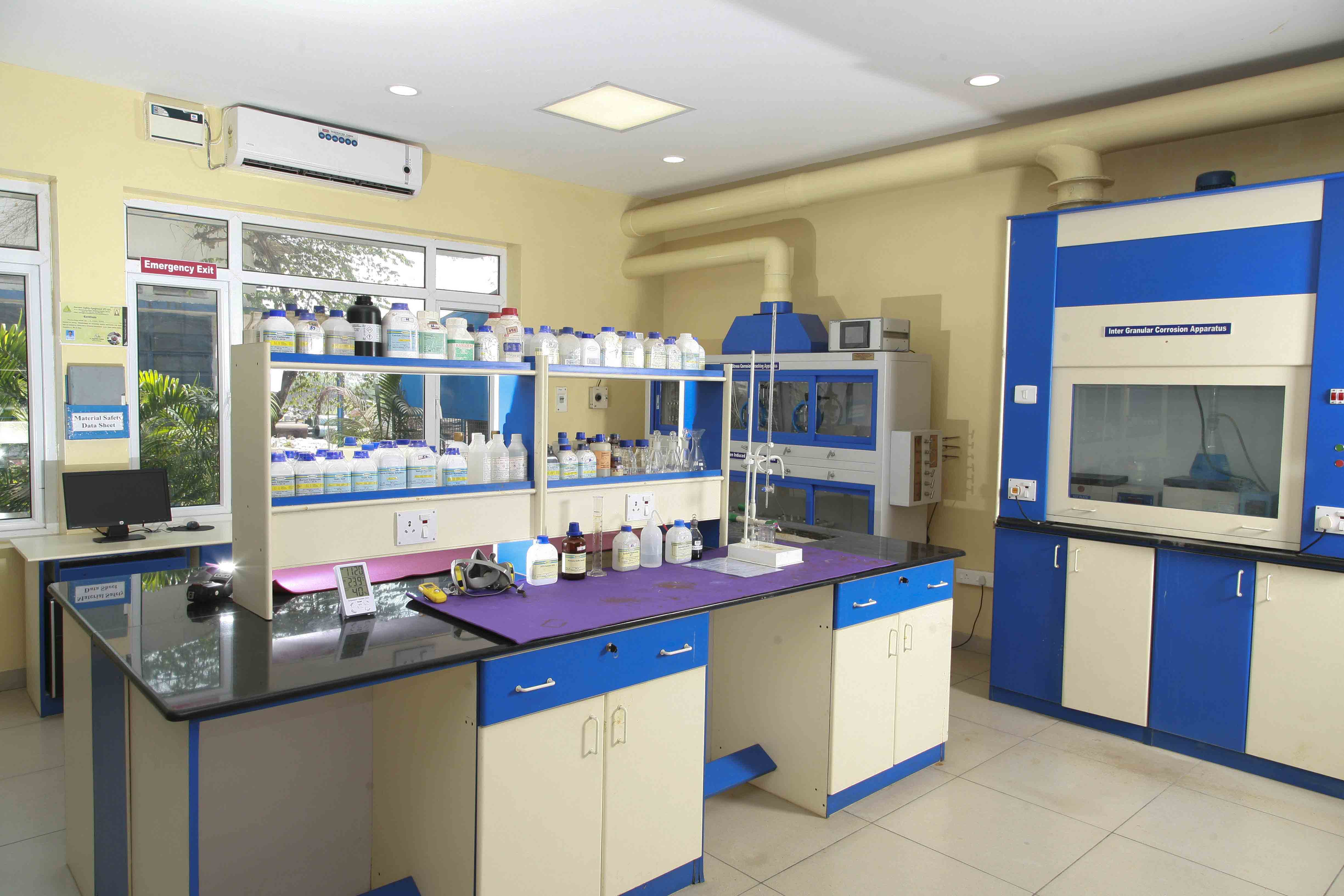
Corrosion Testing
Various corrosion testing machines are available in corrosion lab as per the applicable standards.

Intergranular Corrosion Testing
IGC testing is carried out as per ASTM A262 for austenitic stainless steels. Occurrence of Intergranular corrosion is highly detrimental for the mechanical properties of the material. Proper solution annealing process will enhance the corrosion properties.

Pitting Corrosion Testing
Pitting corrosion is carried out as per ASTM G48 for duplex stainless steels. Separate hot bath chambers are available to maintain the required temperature with required tolerances as per standards.
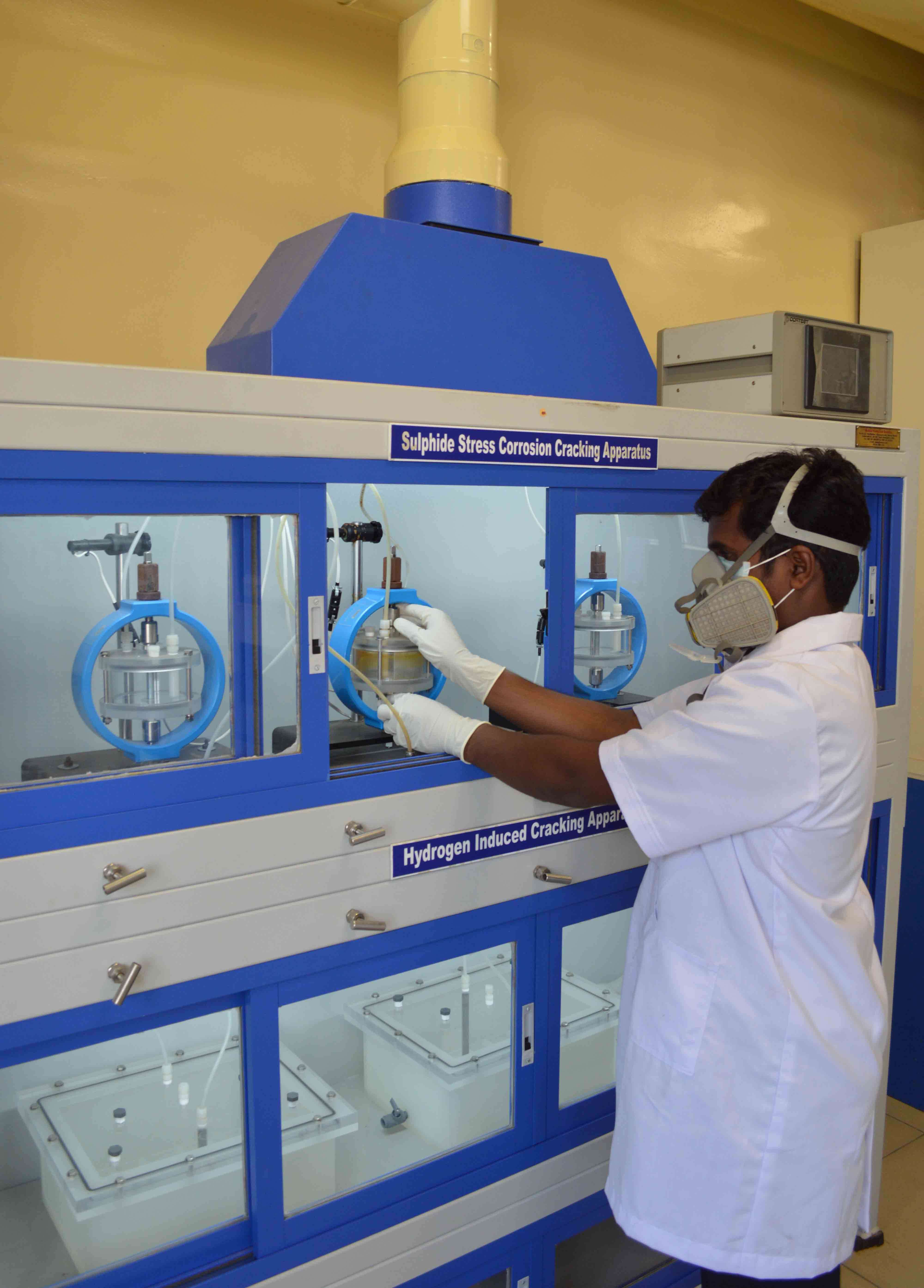
SSCC as per NACE TM0177
Sulphide stress corrosion cracking testing as per NACE TM0177 with H2S environment is available for sour service applications.

HIC as per NACE TM0284
Hydrogen Induced cracking testing as per NACE TM0284 for weld materials to identify the hydrogen absorption in the material.
PMI Testing
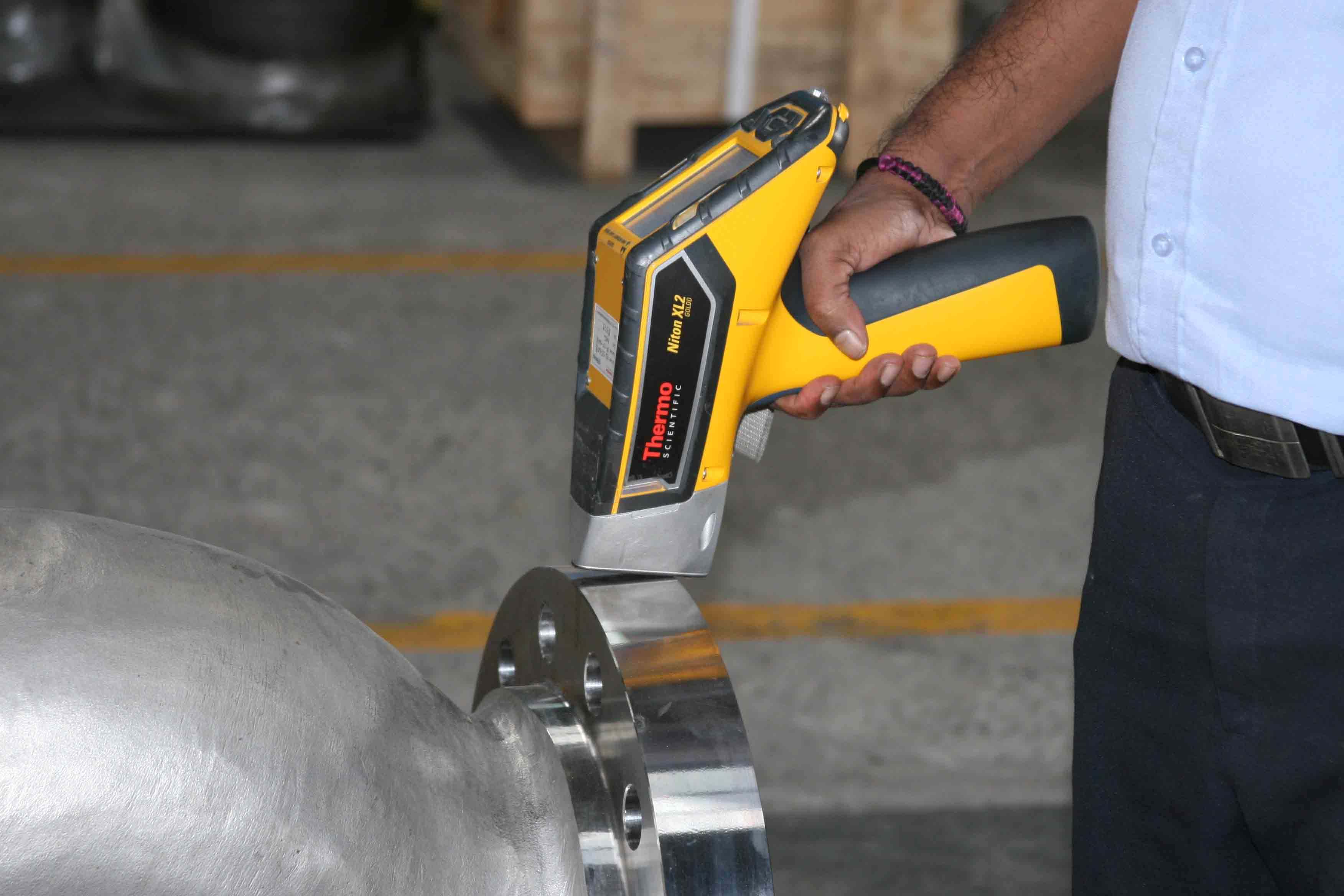
PMI Testing
Positive Material Identification (PMI) is the analysis of a metallic alloy to establish composition by reading the quantities by percentage of its constituent elements.
Radiation survey meter

Radiation survey meter
To identify the radiation contamination on the incoming material and finished products, Gamma-scout is available.
